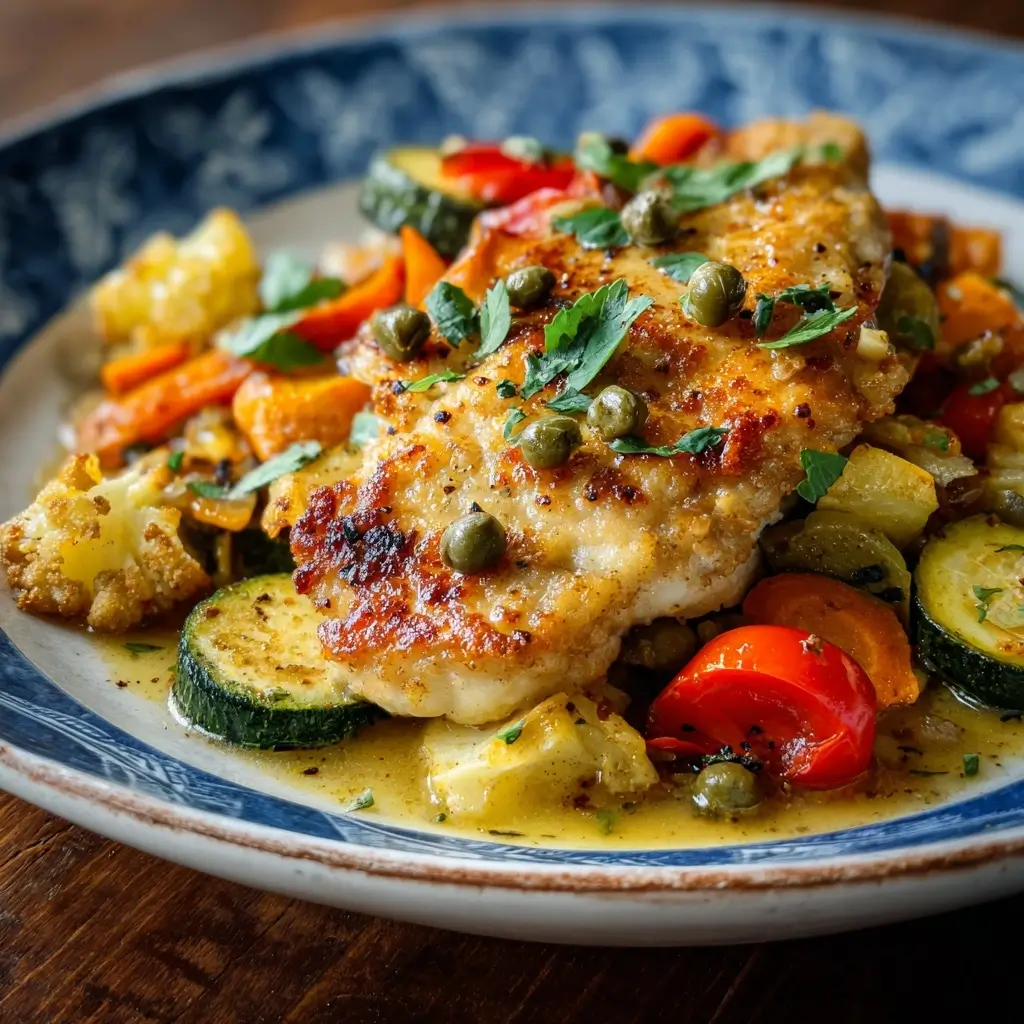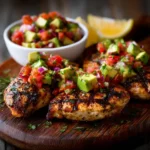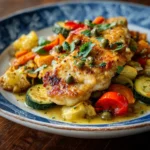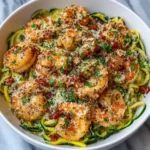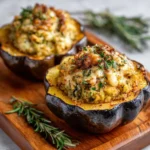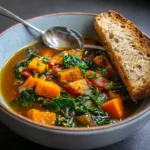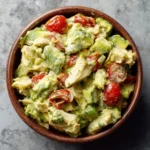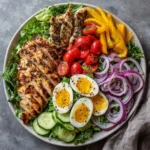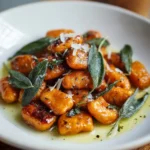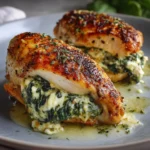Chicken Piccata with Roasted Vegetables: A Flavorful, Healthy, and Elegant Dish
Chicken Piccata with roasted vegetables is a vibrant, Mediterranean-inspired dish that combines tender, lemony chicken cutlets in a tangy caper sauce with a colorful medley of oven-roasted seasonal vegetables. This meal brings together bright citrus flavors, savory herbs, and the natural sweetness of caramelized vegetables for a restaurant-quality experience right in your own kitchen. Whether you’re preparing a weeknight dinner or entertaining guests, this recipe offers both elegance and simplicity. The balance of protein and fiber-rich vegetables makes it not only delicious but also nutritionally balanced.
The History of Chicken Piccata
Chicken Piccata traces its roots back to Italian cuisine, particularly from the regions of Campania and Lombardy. The word “piccata” comes from the Italian word piccante, meaning “piquant” or “tangy,” which perfectly describes the zesty flavor profile of the dish. Traditionally, piccata was made with veal (known as Vitello alla Piccata), a thin cutlet dredged in flour, quickly sautéed, and served with a sauce of lemon juice, butter, white wine, and briny capers. Over time, chicken became a popular and more accessible substitute, leading to the modern version known today as Chicken Piccata.
As Italian immigrants brought their culinary traditions to the United States in the late 19th and early 20th centuries, Chicken Piccata evolved into an American-Italian classic. It’s now a staple on menus across Italian-American restaurants. While purists may argue about authenticity, the essence of the dish—bright acidity, delicate meat, and rich buttery sauce—remains unchanged. Paired with roasted vegetables, this updated version enhances both the nutritional value and visual appeal, making it a well-rounded contemporary meal rooted in tradition.
Ingredients Breakdown
The beauty of Chicken Piccata lies in its simple yet flavorful ingredients. Each component plays a crucial role in building the dish’s signature taste and texture. Here’s a detailed breakdown:
- Chicken breasts: Boneless, skinless chicken breasts are pounded thin to ensure quick, even cooking and a tender bite. You can also use chicken cutlets if available.
- All-purpose flour: Used for light dredging, it helps create a golden crust and thickens the sauce slightly.
- Extra virgin olive oil and unsalted butter: Olive oil provides a clean base for searing, while butter adds richness and depth to the sauce.
- Lemon: Freshly squeezed lemon juice delivers the essential tartness, while lemon zest enhances aroma without added acidity.
- Capers: These briny flower buds from Mediterranean bushes add a salty, tangy pop that defines the piccata flavor.
- White wine: Dry white wine such as Pinot Grigio or Sauvignon Blanc deglazes the pan and adds complexity to the sauce.
- Chicken broth: Enhances the sauce body and balances acidity.
- Garlic: Minced fresh garlic infuses savory depth into the sauce.
- Fresh parsley: Flat-leaf parsley adds freshness and color when stirred in at the end.
- Salt and black pepper: Essential seasonings used throughout to enhance all other flavors.
For the roasted vegetables, we use a mix of nutrient-dense, colorful produce:
- Zucchini: Mild in flavor, high in water content, and rich in vitamin C and antioxidants.
- Yellow squash: Complements zucchini with similar texture and subtle sweetness.
- Red bell peppers: Add sweetness, vibrant color, and are packed with vitamin A and C.
- Cherry tomatoes: Burst with juiciness and natural sugars when roasted.
- Red onion: Offers sharpness when raw but becomes mellow and sweet after roasting.
- Broccoli florets: Contribute crunch and are high in fiber, vitamin K, and folate.
- Olive oil, garlic powder, dried oregano, salt, and pepper: Coat the vegetables for even browning and seasoning.
Step-by-Step Recipe
Preparing the Roasted Vegetables
- Preheat your oven to 425°F (220°C). Line two large baking sheets with parchment paper for easy cleanup.
- Wash and prepare the vegetables: slice zucchini and yellow squash into half-moons, chop red bell peppers into 1-inch pieces, halve cherry tomatoes, cut red onion into wedges, and separate broccoli into small florets.
- In a large mixing bowl, combine all chopped vegetables. Drizzle with 3 tablespoons of extra virgin olive oil. Add 1 teaspoon garlic powder, 1 teaspoon dried oregano, 1 teaspoon salt, and ½ teaspoon freshly ground black pepper.
- Toss everything thoroughly until all vegetables are evenly coated.
- Spread the vegetables in a single layer across the two baking sheets. Avoid overcrowding to ensure proper roasting instead of steaming.
- Roast in the preheated oven for 25–30 minutes, flipping halfway through with a spatula, until edges are caramelized and vegetables are tender-crisp.
- Remove from oven and set aside. Cover lightly with foil to keep warm.
Preparing the Chicken Piccata
- Place chicken breasts between two sheets of plastic wrap or in a zip-top bag. Using a meat mallet or heavy skillet, pound them to an even thickness of about ¼ inch. This ensures quick, uniform cooking.
- Slice each breast in half horizontally if very thick, creating thinner cutlets.
- Season both sides of the chicken with salt and pepper.
- Spread ½ cup all-purpose flour on a shallow plate. Dredge each chicken cutlet in the flour, shaking off excess. Set aside on a clean plate.
- In a large skillet (preferably stainless steel or non-stick), heat 2 tablespoons of olive oil and 1 tablespoon of butter over medium-high heat until shimmering but not smoking.
- Add the chicken cutlets in a single layer, being careful not to crowd the pan. Cook for 2–3 minutes per side, until golden brown and cooked through (internal temperature should reach 165°F). Transfer to a plate and cover loosely with foil.
- Reduce heat to medium. To the same skillet, add 1 minced garlic clove and sauté for 30 seconds until fragrant.
- Pour in ½ cup dry white wine, using a wooden spoon to scrape up any browned bits (this is flavor gold!). Let simmer for 1–2 minutes until reduced by half.
- Add ½ cup low-sodium chicken broth, ¼ cup fresh lemon juice (about 1–2 lemons), and 3 tablespoons drained capers. Stir and bring to a gentle simmer.
- Stir in 2 tablespoons cold unsalted butter, one piece at a time, swirling the pan until fully incorporated. This creates a silky, emulsified sauce.
- Return the chicken and any accumulated juices to the skillet. Spoon the sauce over the cutlets and let them warm through for 1–2 minutes.
- Remove from heat. Stir in ¼ cup chopped fresh parsley and adjust seasoning with salt and pepper if needed.
- Garnish with lemon slices and additional parsley before serving.
Plating and Serving
To serve, place a generous portion of roasted vegetables on each plate. Top with one or two chicken cutlets, then spoon the luscious lemon-caper sauce generously over the chicken. For an elegant touch, garnish with lemon zest, a sprig of parsley, or a few whole capers.
Tips for Perfect Chicken Piccata with Roasted Vegetables
- Don’t skip pounding the chicken: Uniform thickness prevents overcooking and ensures tenderness.
- Use fresh lemon juice: Bottled lemon juice lacks brightness and can have off-flavors.
- Don’t overcook the chicken: Since the cutlets are thin, they cook quickly. Overcooking leads to dryness.
- Control sauce acidity: If the sauce tastes too tart, balance it with a pinch of sugar or a bit more butter.
- Roast vegetables evenly: Cut them into similar sizes so they cook uniformly.
- Use high oven heat: Roasting at 425°F promotes caramelization, enhancing flavor.
- Reserve pan drippings: The fond (browned bits) in the chicken pan is essential for building a flavorful sauce.
- Add butter at the end: Cold butter stirred in off-heat gives the sauce a glossy, restaurant-style finish.
- Make it ahead: Roast vegetables earlier in the day and reheat before serving. Prepare ingredients in advance for faster weeknight cooking.
- Rest the chicken: Letting it rest under foil keeps it juicy before returning to the sauce.
Variations and Customizations
This versatile recipe welcomes creative adaptations based on dietary needs and flavor preferences:
- Gluten-free version: Replace all-purpose flour with almond flour, rice flour, or a gluten-free flour blend for dredging.
- Dairy-free option: Use vegan butter or omit butter entirely, relying on olive oil for richness. The sauce will be lighter but still flavorful.
- Vegetarian twist: Substitute chicken with thick slices of portobello mushrooms or tofu cutlets. Sear and finish in the piccata sauce for a plant-based alternative.
- Spicy kick: Add a pinch of red pepper flakes to the sauce or toss vegetables with a dash of cayenne before roasting.
- Herb variations: Swap parsley with fresh dill, basil, or tarragon for a unique aromatic note.
- Additional vegetables: Try adding carrots, asparagus, eggplant, or fennel to the roast mix depending on seasonality.
- Protein swaps: Use veal, turkey cutlets, or even flaky white fish like cod for a different take on piccata.
- Creamy variation: Stir in a splash of heavy cream or crème fraîche at the end for a richer, milder sauce.
- Low-sodium diet: Use no-salt-added broth and reduce added salt, relying on herbs and lemon for flavor.
- One-pan option: For easier cleanup, bake chicken on top of the vegetables during the last 15 minutes of roasting, then finish with stovetop sauce.
Health Considerations and Nutritional Value
Chicken Piccata with Roasted Vegetables is inherently a balanced, nutrient-dense meal. Here’s a breakdown of its health benefits:
- Lean protein: Chicken breast is low in fat and high in protein, supporting muscle maintenance and satiety.
- Heart-healthy fats: Olive oil contains monounsaturated fats and antioxidants linked to improved cardiovascular health.
- Vitamin C boost: Lemon juice and bell peppers provide immune-supporting vitamin C.
- Fiber-rich vegetables: The roasted vegetable medley supplies dietary fiber, aiding digestion and promoting gut health.
- Antioxidants: Colorful veggies contain phytonutrients like lycopene (tomatoes), beta-carotene (peppers), and flavonoids (onions).
- Low in carbs: Naturally low in carbohydrates, making it suitable for low-carb or keto diets (adjust flour as needed).
- Gluten awareness: Easily adaptable for gluten-free diets with proper substitutions.
- Sodium control: By using low-sodium broth and limiting added salt, this dish can fit into heart-healthy eating plans.
A typical serving (one chicken cutlet with 1 cup roasted vegetables and sauce) contains approximately:
- Calories: 320–380
- Protein: 30–35g
- Fat: 14–18g (mostly unsaturated)
- Carbohydrates: 12–16g
- Fiber: 4–5g
- Sugar: 6–8g (naturally occurring)
- Sodium: 450–600mg (can be reduced further)
This dish supports weight management, energy stability, and overall wellness when enjoyed as part of a balanced diet.
Ingredients
For the Roasted Vegetables:
- 1 medium zucchini, sliced into half-moons
- 1 medium yellow squash, sliced into half-moons
- 1 red bell pepper, chopped
- 1 cup cherry tomatoes, halved
- 1 cup broccoli florets
- ½ red onion, cut into wedges
- 3 tbsp extra virgin olive oil
- 1 tsp garlic powder
- 1 tsp dried oregano
- 1 tsp salt
- ½ tsp black pepper
For the Chicken Piccata:
- 4 boneless, skinless chicken breasts (about 6 oz each)
- ½ cup all-purpose flour (or gluten-free alternative)
- 1 tsp salt
- ½ tsp black pepper
- 2 tbsp olive oil
- 2 tbsp unsalted butter, divided
- 2 garlic cloves, minced
- ½ cup dry white wine (e.g., Pinot Grigio)
- ½ cup low-sodium chicken broth
- ¼ cup fresh lemon juice (about 1–2 lemons)
- 3 tbsp capers, drained
- ¼ cup fresh parsley, finely chopped
- Lemon slices, for garnish
Directions
- Roast the vegetables: Preheat oven to 425°F (220°C). Toss all vegetables with olive oil, garlic powder, oregano, salt, and pepper. Spread on two parchment-lined baking sheets and roast 25–30 minutes, flipping halfway, until tender and caramelized. Set aside.
- Prepare chicken: Place chicken breasts between plastic wrap and pound to ¼-inch thickness. Season with salt and pepper. Dredge in flour, shaking off excess.
- Cook chicken: In a large skillet, heat olive oil and 1 tbsp butter over medium-high heat. Add chicken in batches and cook 2–3 minutes per side until golden and cooked through. Transfer to a plate and cover.
- Make the sauce: Reduce heat to medium. Sauté garlic 30 seconds. Add wine and simmer 1–2 minutes until reduced by half. Stir in broth, lemon juice, and capers. Simmer 2–3 minutes.
- Finish sauce: Whisk in remaining 1 tbsp cold butter until smooth. Return chicken and juices to skillet. Warm 1–2 minutes.
- Serve: Plate with roasted vegetables, spoon sauce over chicken, and garnish with parsley and lemon slices.
FAQ
Can I make Chicken Piccata ahead of time?
Yes, you can prep ingredients in advance. Roast vegetables and store refrigerated for up to 2 days. Chicken can be pounded and floured ahead, but cook just before serving for best texture. Reheat sauce gently and add butter at the end.
What wine should I use for Chicken Piccata?
Use a dry, crisp white wine like Pinot Grigio, Sauvignon Blanc, or unoaked Chardonnay. Avoid sweet wines as they can make the sauce cloying.
Can I freeze Chicken Piccata?
While possible, freezing may affect texture—chicken can become dry and sauce may separate. Best enjoyed fresh. Roasted vegetables freeze better and can be used in soups or grain bowls later.
Are capers necessary?
Capers are essential for authentic piccata flavor. If unavailable, substitute with chopped green olives (use sparingly due to saltiness) or omit for a milder taste.
Why did my sauce turn out too sour?
Overly tart sauce usually results from too much lemon juice. Balance with a pinch of sugar or extra butter. Always taste and adjust before serving.
Can I use chicken thighs instead of breasts?
Yes, but thighs will require longer cooking and won’t absorb the sauce as delicately. They’re more forgiving with moisture but alter the traditional texture.
How do I prevent the sauce from breaking?
Avoid boiling the sauce after adding butter. Keep heat low and stir gently. Adding cold butter off-heat helps create a stable emulsion.
Is this dish keto-friendly?
With modifications—replace flour with almond flour or omit dredging entirely—it can fit a keto lifestyle. Focus on healthy fats and limit higher-carb vegetables like onions.
Summary
Chicken Piccata with Roasted Vegetables is a harmonious blend of zesty, buttery chicken in a classic lemon-caper sauce served alongside vibrant, caramelized seasonal vegetables. Elegant enough for company yet simple enough for busy nights, this nutritious dish delivers bold flavors and wholesome satisfaction in every bite.
